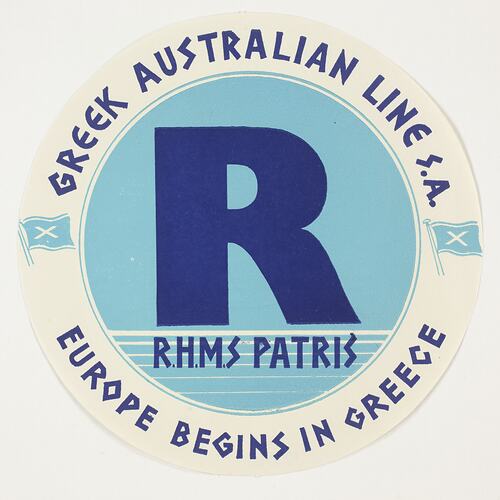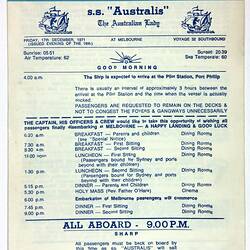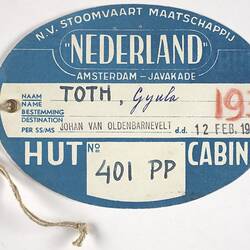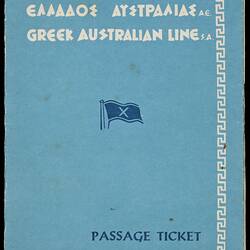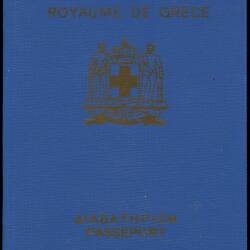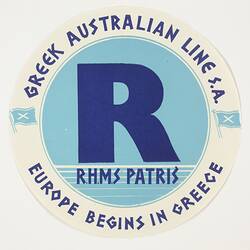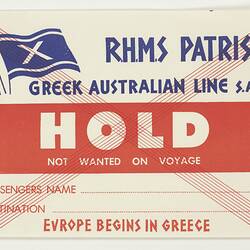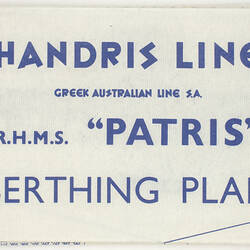Summary
History of the post World War II Migrant Ship Patris, the first liner in the Greek-owned Chandris fleet. Although the Patris' accommodation was relatively basic compared to later Chandris ships, it was still popular with its passengers.
In 1959 the Patris became the first liner in the Greek-owned Chandris fleet. The ship was popular with passengers, despite having the dishonour of once running aground in the Suez Canal, and colliding with the collier Rickie Miller on Sydney Harbour in 1971. Many of her passengers were heading to Australia with a sense of adventure - hoping to begin a new way of life. Whatever the reason, mention of a journey on the Patris evokes memories that many will never forget.
Facts at a Glance
Dimensions: 595 x 76 ft (181.3 x 23.3 m)
Registered Tonnage: 16,259 tons gross
Service Speed: 18 knots
Propulsion: Burmeister & Wain diesels / twin screws
Shipping Line: Chandris Line
History of the Ship
Originally named Bloemfontein Castle, the immigrant ship Patris began her life carrying passengers from London to Cape Town, South Africa for the Union-Castle Line. When launched on 25 August 1949, she provided accommodation for 721 passengers in a single class, unlike other ships in the Union-Castle Line.
In October 1959, she was purchased by Chandris Line and christened Patris (Greek for 'homeland'). The Patris was then refitted for the Australian migrant trade, providing accommodation for 36 first-class passengers and 1,040 in tourist-class; however this was soon merged into single-class accommodation for the entire 1,076 passengers. Compared to later Chandris liners like the Ellinis and the Australis, the Patris's accommodation was rather austere.
Immigrant Ship to Australia
The Patris left Piraeus, Greece, for her first immigrant voyage to Australia on 14 December 1959, reaching Fremantle on 2 January 1960 and Melbourne on 7 January. She made a total of 91 voyages to Australia between 1959 and 1975, travelling regularly via the Suez Canal, stopping at ports such as Aden, Port Said and Colombo.
In 1967, when the Suez was closed, she detoured, for five years around Africa stopping at Cape Town and Durban on her way to Australia. After Darwin was almost destroyed by Cyclone Tracy on Christmas Day in 1974, the Patris anchored in Darwin Harbour for nine months to provide emergency accommodation for those left homeless.
Passenger Experiences of the Journey
Many Greek immigrants that travelled on the Patris came from small villages with few luxuries and the pressure of small village politics.
Pat Skoufis migrated from Greece in 1964:
'I was little and only remember being seasick the whole trip. We were from the village, so mum and dad would have thought the Patris luxurious.'.
Georgia Vlahakis migrated from Greece in 1971:
'It was a great adventure for me, going on an airplane to Djibouti and then boarding a huge ship Patris to arrive in Fremantle first and Port Melbourne - the final destination. I suppose we did not speak about feelings in our family. My parents were eager to make a new start away from political confusion (petty village politics).'.
Her Final Voyage
After leaving Darwin in November 1975, the Patris did not return to Australia. In 1979, she was converted to a car ferry to serve on the seasonal trade between Greece and Italy. She was then sold to the Karageorgis Line and renamed Mediterranean Star under whose flag she continued as a ferry and occasional Mediterranean cruise ship until 1986.
In August 1987, after a long period of idleness, she was towed under the name of Terra to Karachi, Pakistan, and into the hands of the shipbreakers.
References:
Baty, S. 1984. Ships That Passed - The Glorious Era of Travel to Australia and New Zealand. Reed Books Pty Ltd. Frenchs Forest.
Plowman, P. 1992. Emigrant Ships to Luxury Liners. New South Wales University Press. Kensington.
Stodden, K. 2003 (October). Appendix A - Tally of Voyages. Prepared for the Ship Reunion Lecture. Immigration Museum.
More Information
-
Keywords
-
Authors
-
Article types
